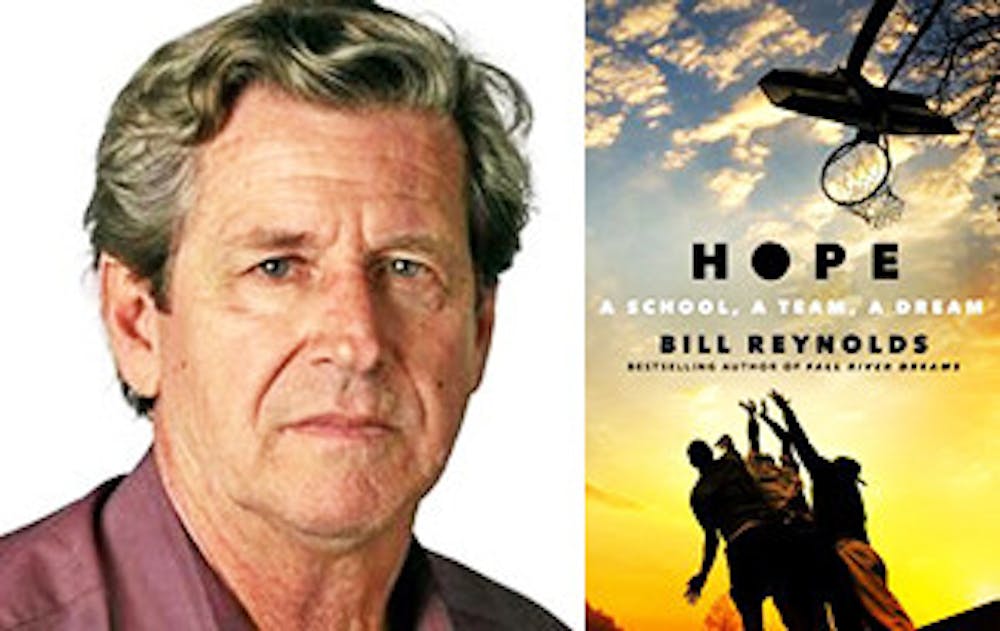Only five blocks up from the Thayer Street CVS, Blue State and a bevy of first-year dormitories lies Hope High School.
Though only a two-minute drive apart, Hope and Brown speak to the two stratospheres of our education system. With less than half of the student body proficient in reading and roughly 75 percent of its students considered “economically disadvantaged,” Hope’s similarities to Brown end with its zip code.
This is the world Providence Journal sports columnist Bill Reynolds dove into for his new book, “Hope: A School, a Team, a Dream,” in which he shadows Hope’s basketball team, the Blue Wave, through one tumultuous season.
The book is composed primarily of three strands: the team’s lackluster games, the difficult — if not traumatic — lives of each player and relevant portions of Providence’s history, which show the reader how Hope High School went from a ‘model city school’ to one of Providence’s most impoverished.
In choosing basketball, Reynolds finds the students vying most intensely for escape. While academics has failed them, “the great basketball lottery” provides each kid a shot to receive the golden ticket to a life out of poverty. For the subjects of Reynolds’ book, basketball represents the chance for a college education and a stable income.
But it is far from the perfect escape. When Hope students play basketball, they play in a gym that hasn’t been touched for decades. Come practice time, many of their players haven’t had anything to eat since noon. In between the plays, they are preoccupied with potential pregnancies, failing grades and concerns about graduation. They are dealing with the weight of the world in an aging gym with faulty heating. Strikingly, they are contending with all these challenges only five minutes away from Brown’s Erickson Athletic Complex.
Throughout the book, Reynolds repeatedly sheds light on this disparity of educational standards by delving into the dusty corners of a school ravaged by the war on drugs. He finds a school in disrepair, where students walking out of class is common — if not expected — and alums can recount seeing a teacher bound with rope to his chair and heckled by students. It is a school implicated in Rhode Island’s shocking statistic of 40 percent unemployment for young black males, as most students have no plans professionally or academically come June.
In a few particularly poignant tales, Reynolds prods the students to reveal those whom the education system has missed — those whose sole knowledge about Brown is that they “have a good cooking school,” those who believe Martin Luther King Jr. freed the slaves or that going a half hour east of Providence puts them in Cuba.
These portrayal of the contrast between the privilege of the Brown community and the lack of resources at Hope are where the book shines. But the work falls flat in between the anecdotes, succumbing to dull dialogue and repetitive plot, as the travesty of the team losing again and again is quickly dulled by the frequency with which it happens.
Reading “Hope: A School, a Team, a Dream” is like digging for gold. There is a lot of material you must bulldoze through — mainly monotonous recaps of each game, unfulfilling player profiles and heavy-handed rhetoric. But in the middle of what can read as a series of sports clippings, a glimmer of gold appears to reveal an anecdote or history, making the dig worthwhile. And, by the end of the book, you have a collection that gives a valuable glimpse of a life we are somehow sheltered from by the Brown bubble, even though the bubble lies directly on top of the students of Hope.





